Virtual reality (VR) training refers to the use of VR technology to provide immersive and interactive training experiences. VR training can be used to simulate real-world scenarios, allowing individuals to learn and practice skills in a safe and controlled environment. Here are a few examples of how VR training is being used today:
1. Healthcare

VR training is being used in healthcare to provide hands-on training to medical professionals. For example, VR can be used to simulate surgeries, allowing medical students to practice procedures and techniques without the risk of harming a patient. VR can also be used to train medical professionals on new equipment or procedures.

1. Rehabilitation:
VR is being used in rehabilitation to help patients recover from injuries and surgeries. For example, VR can be used to help patients with physical therapy exercises, such as range of motion or balance training. VR can also be used to help patients with cognitive rehabilitation, such as memory or attention training.
2. Mental health treatment:
VR is being used in mental health treatment to help patients with conditions such as phobias, anxiety disorders, and post-traumatic stress disorder (PTSD). For example, VR can be used to expose patients to virtual environments that trigger their fears and help them learn coping mechanisms. VR can also be used to provide immersive and interactive therapy sessions, such as virtual reality exposure therapy (VRET).

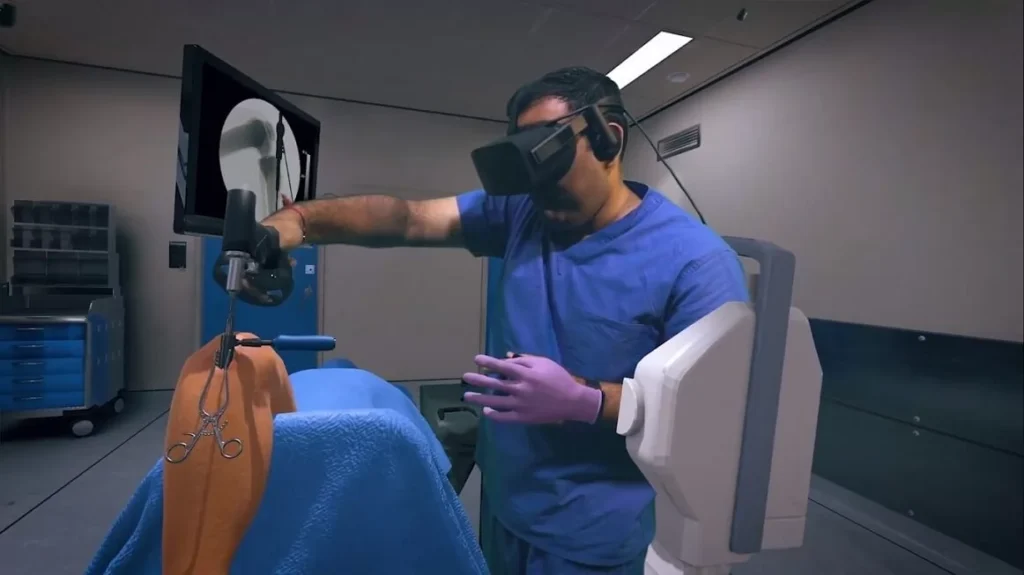
3. Surgical training:
VR is being used to train surgeons and medical professionals on new procedures and techniques. For example, VR can be used to simulate surgeries, allowing medical professionals to practice procedures and techniques without the risk of harming a patient. VR can also be used to train medical professionals on new equipment or procedures.
4. Chronic pain management:
VR is being used to help patients with chronic pain manage their symptoms. For example, VR can be used to provide immersive and interactive experiences that distract patients from their pain. VR can also be used to help patients relax and reduce stress, which can help reduce pain.

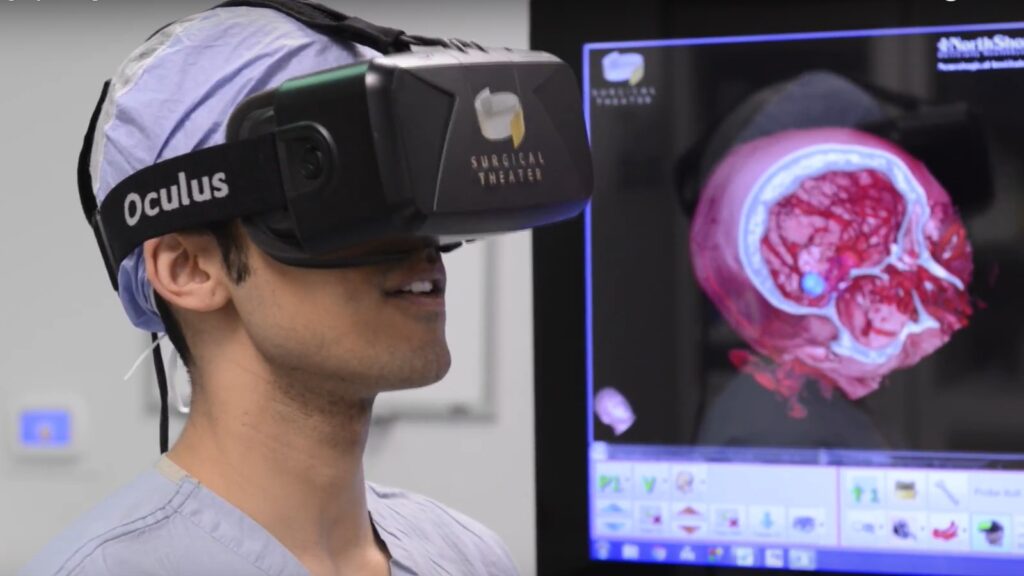
5. Medical visualization:
VR is being used to visualize and analyze medical data, such as MRI or CT scans. For example, VR can be used to create 3D models of the body, allowing doctors to better understand and diagnose medical conditions. VR can also be used to plan and simulate surgeries, helping doctors to determine the best course of action.
2. Military:
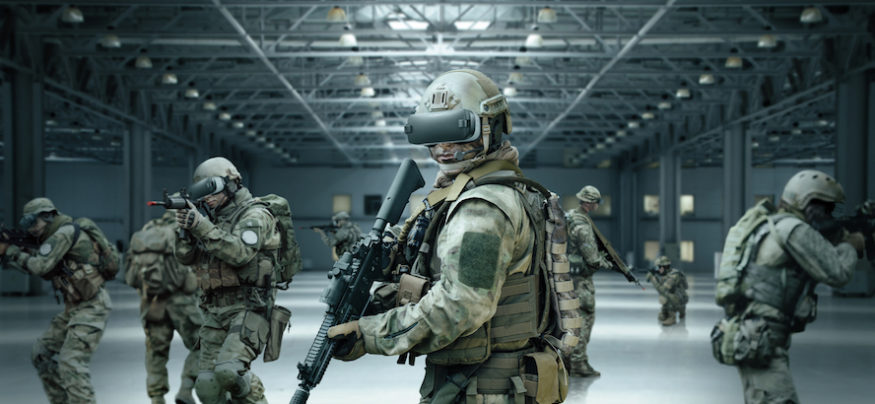
VR training is being used in the military to provide realistic and immersive training experiences to soldiers. For example, soldiers can use VR to practice combat scenarios, emergency response drills, and other mission-critical tasks. VR training can also be used to teach soldiers about different cultures and environments they may encounter while deployed.
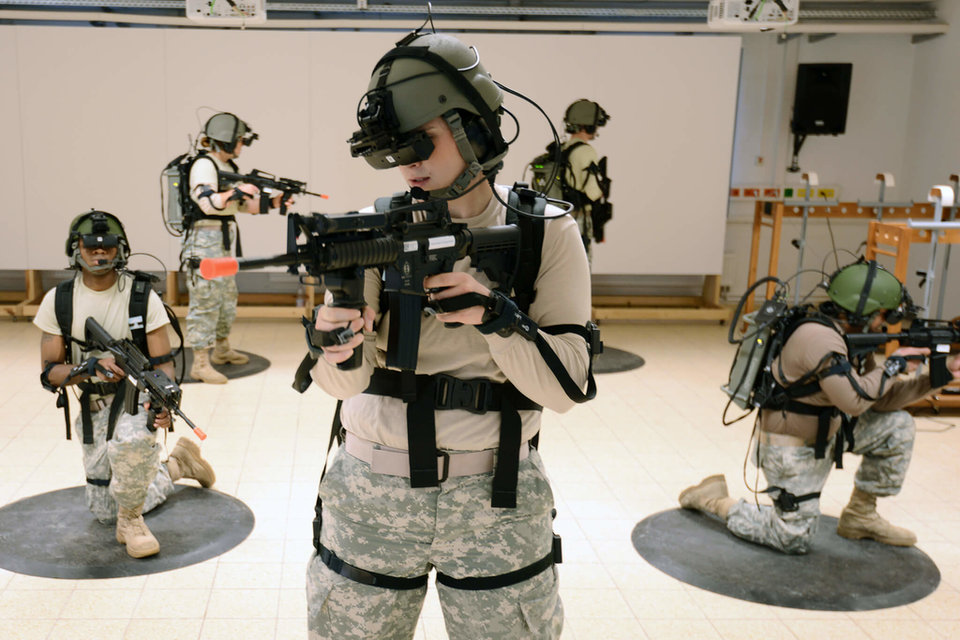
1. Combat training:
VR is being used to provide realistic and immersive combat training to soldiers. For example, soldiers can use VR to practice combat scenarios, such as clearing a building or engaging in close-quarters combat. VR training can also be used to teach soldiers about different cultures and environments they may encounter while deployed.
2. Emergency response training:
VR is being used to provide realistic and immersive training to soldiers in emergency response scenarios. For example, soldiers can use VR to practice responding to natural disasters, chemical spills, or other emergencies. VR training can also be used to teach soldiers about different cultures and environments they may encounter while responding to emergencies.
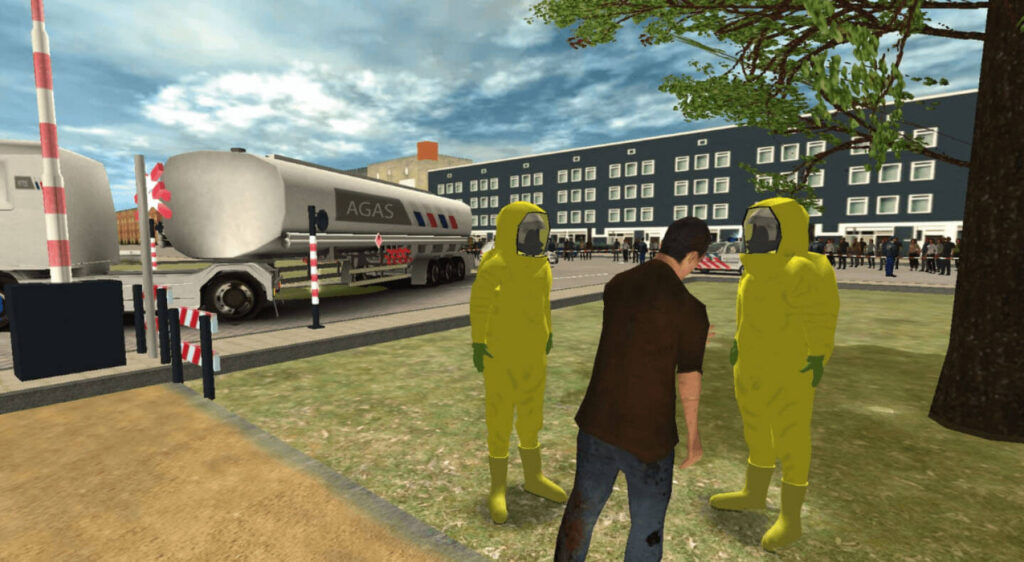
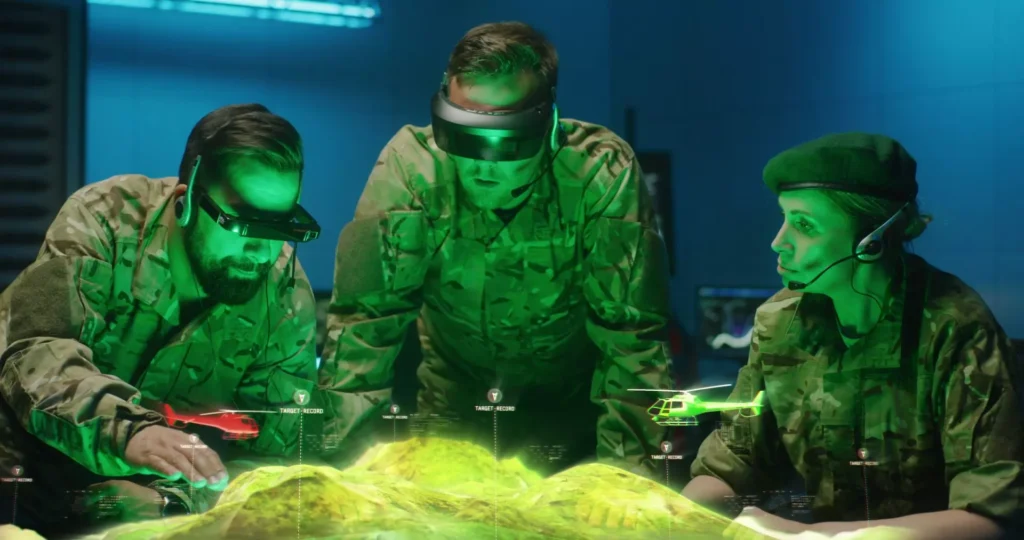
3. Virtual deployment:
VR is being used to provide immersive and interactive training to soldiers before they are deployed. For example, soldiers can use VR to experience different cultures and environments they may encounter while deployed. VR training can also be used to teach soldiers about different customs and traditions they may encounter while deployed.
4. Equipment training:
VR is being used to train soldiers on the proper use and maintenance of equipment. For example, soldiers can use VR to practice operating and maintaining weapons, vehicles, or other equipment. VR training can also be used to teach soldiers about different cultures and environments they may encounter while using equipment.
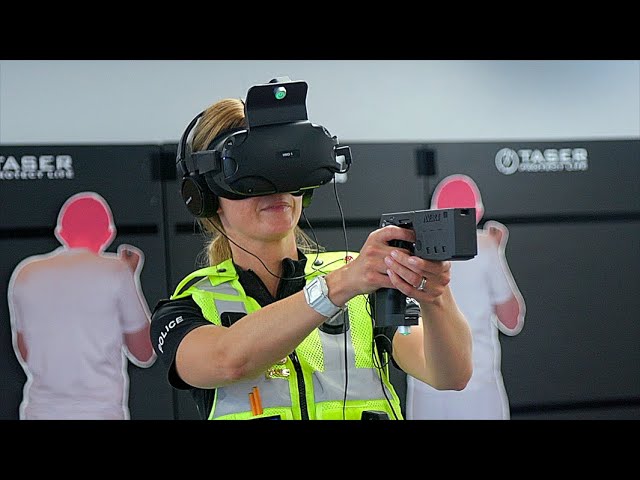
3. Law enforcement:
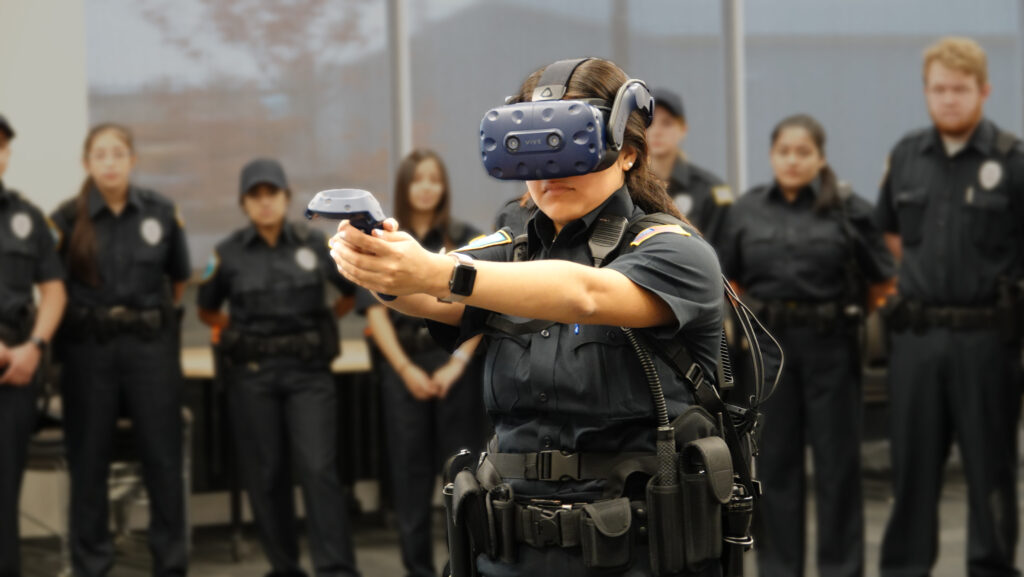
VR training is being used in law enforcement to provide realistic and immersive training experiences to officers. For example, officers can use VR to practice crowd control, hostage negotiation, and other scenarios they may encounter in the field. VR training can also be used to teach officers about different cultures and environments they may encounter while on duty.
1. Crowd control training:
VR is being used to provide realistic and immersive training to law enforcement officers in crowd control scenarios. For example, officers can use VR to practice managing crowds at large events or protests, or to respond to riots or other disturbances. VR training can also be used to teach officers about different cultures and environments they may encounter while managing crowds.


3. Hostage negotiation training:
VR is being used to provide realistic and immersive training to law enforcement officers in hostage negotiation scenarios. For example, officers can use VR to practice negotiating with hostage takers, or to respond to barricaded suspects. VR training can also be used to teach officers about different cultures and environments they may encounter while negotiating with hostage takers.
4. Active shooter training:
VR is being used to provide realistic and immersive training to law enforcement officers in active shooter scenarios. For example, officers can use VR to practice responding to and neutralizing active shooters, or to respond to mass shootings. VR training can also be used to teach officers about different cultures and environments they may encounter while responding to active shooters.
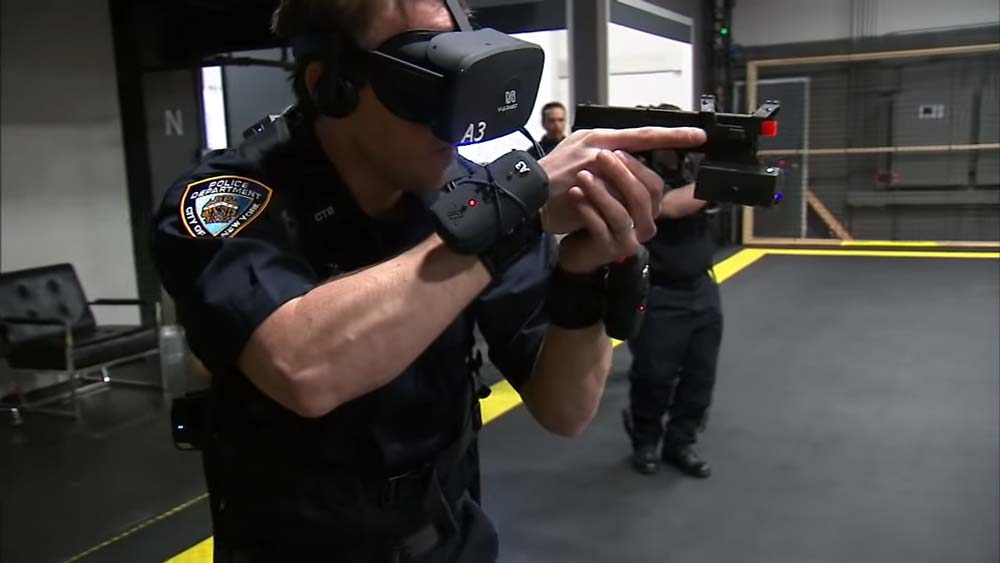
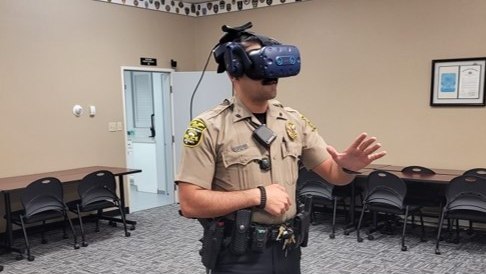
5. Traffic stop training:
VR is being used to provide realistic and immersive training to law enforcement officers in traffic stop scenarios. For example, officers can use VR to practice conducting traffic stops, or to respond to potentially dangerous situations during traffic stops. VR training can also be used to teach officers about different cultures and environments they may encounter while conducting traffic stops.
6. Community policing:
VR is being used to provide training to law enforcement officers in community policing and relationship-building skills. For example, officers can use VR to practice interacting with and building trust with community members, or to respond to sensitive situations. VR training can also be used to teach officers about different cultures and environments they may encounter while working in the community
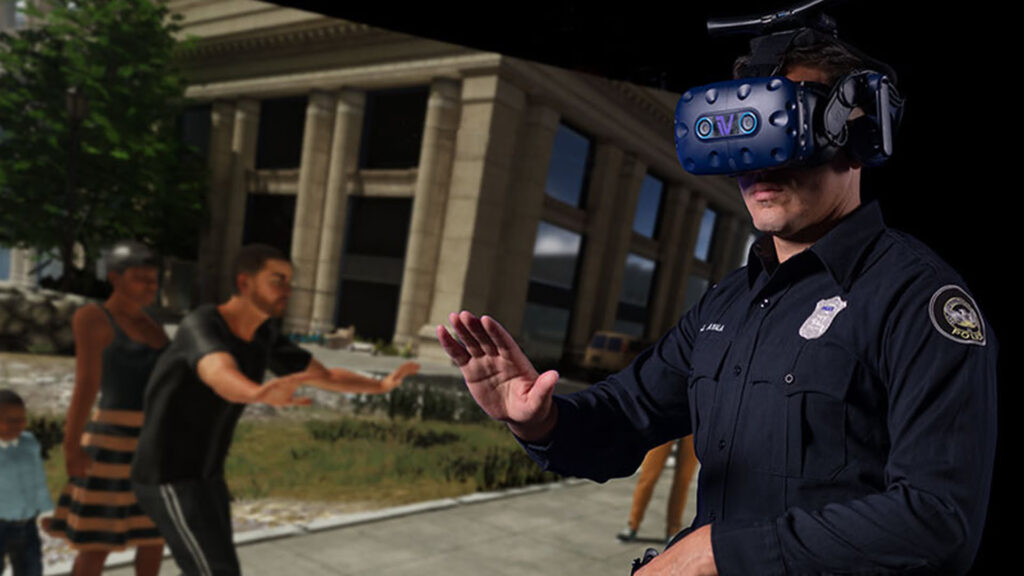
4. Industrial and manufacturing:
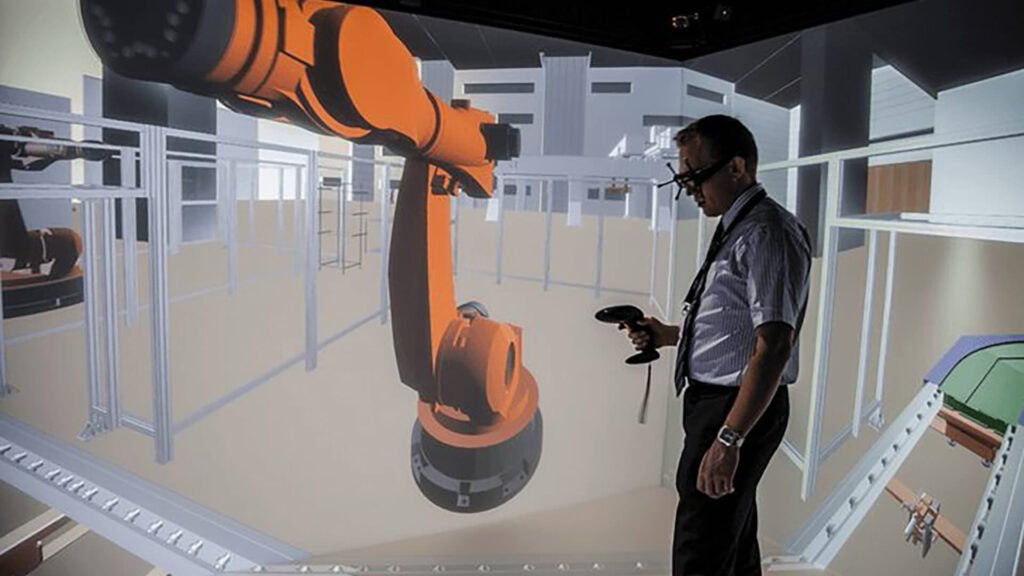
VR training is being used in the industrial and manufacturing sectors to train employees on new equipment and processes. For example, VR can be used to train employees on the proper use of machinery, or to visualize and troubleshoot production lines. VR training can also be used to teach employees about safety procedures and protocols.
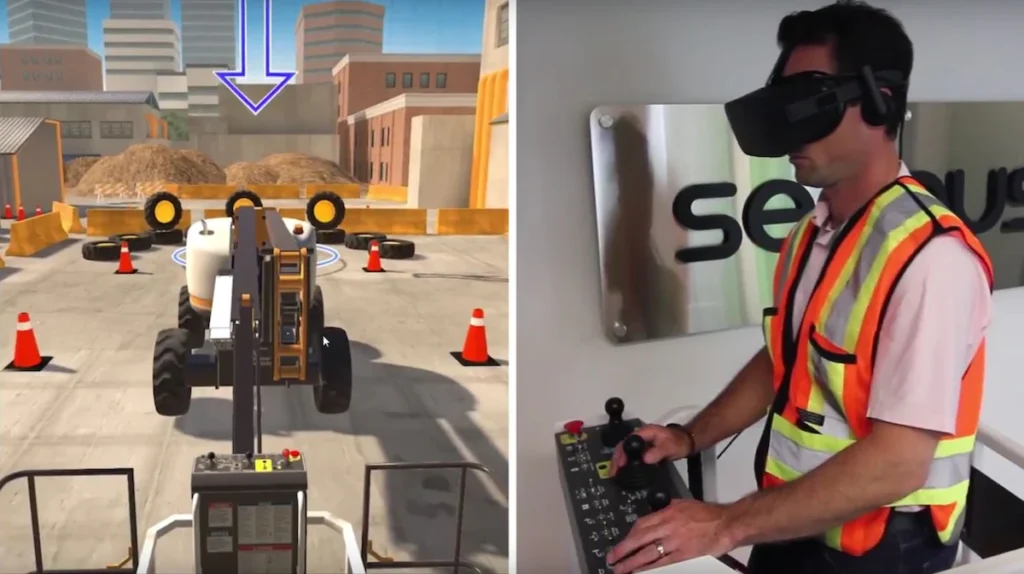
1. Equipment training:
VR is being used to train employees on the proper use and maintenance of equipment. For example, employees can use VR to practice operating and maintaining machinery, or to learn about safety procedures and protocols. VR training can also be used to teach employees about different cultures and environments they may encounter while using equipment.
2. Safety training:
VR is being used to train employees on safety procedures and protocols. For example, employees can use VR to practice responding to emergencies or hazardous situations, or to learn about safety procedures and protocols. VR training can also be used to teach employees about different cultures and environments they may encounter while working in an industrial or manufacturing setting.


3. Quality control:
VR is being used to train employees on quality control procedures and protocols. For example, employees can use VR to practice identifying and correcting defects, or to learn about quality control standards and best practices. VR training can also be used to teach employees about different cultures and environments they may encounter while working on quality control.
5. Aerospace:

VR training is being used in the aerospace industry to provide immersive and interactive training to pilots. For example, VR can be used to simulate different aircraft and environments, allowing pilots to practice takeoff and landing procedures, navigate through storms and other challenges, and more. VR training can also be used to teach pilots about different cultures and environments they may encounter while flying.
1. Pilot training:
VR is being used to provide immersive and interactive training to pilots. For example, pilots can use VR to simulate different aircraft and environments, allowing them to practice takeoff and landing procedures, navigate through storms and other challenges, and more. VR training can also be used to teach pilots about different cultures and environments they may encounter while flying.

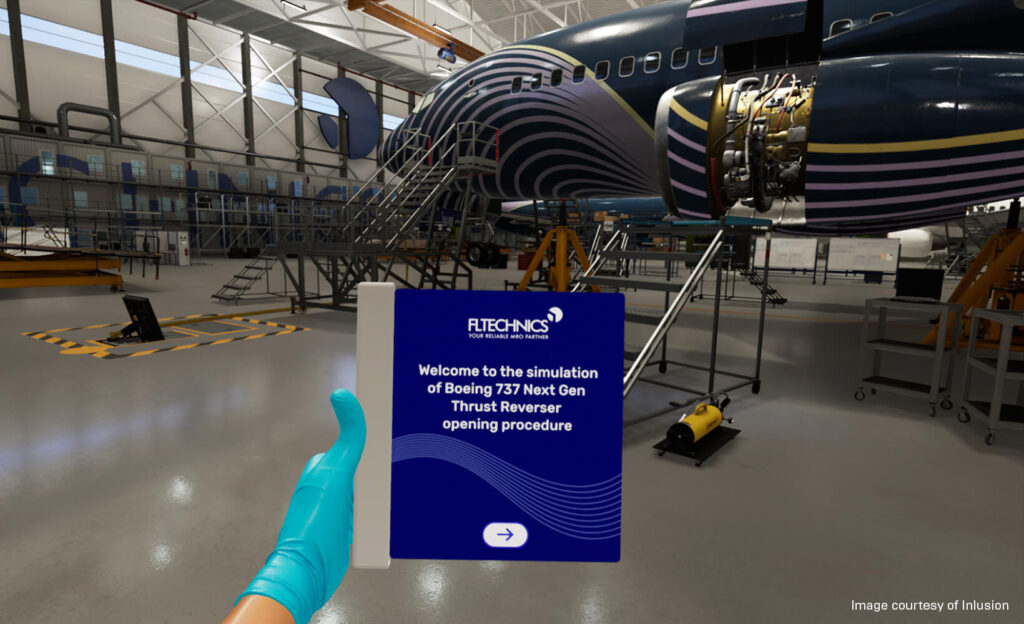
2. Maintenance training:
VR is being used to train maintenance personnel on the proper use and maintenance of aircraft and equipment. For example, maintenance personnel can use VR to practice repairing and maintaining aircraft components, or to learn about safety procedures and protocols. VR training can also be used to teach maintenance personnel about different cultures and environments they may encounter while working on aircraft.
3. Customer service training:
VR is being used to train customer service personnel in the aerospace industry. For example, customer service personnel can use VR to practice interacting with and assisting customers, or to learn about different cultures and environments they may encounter while working with customers.
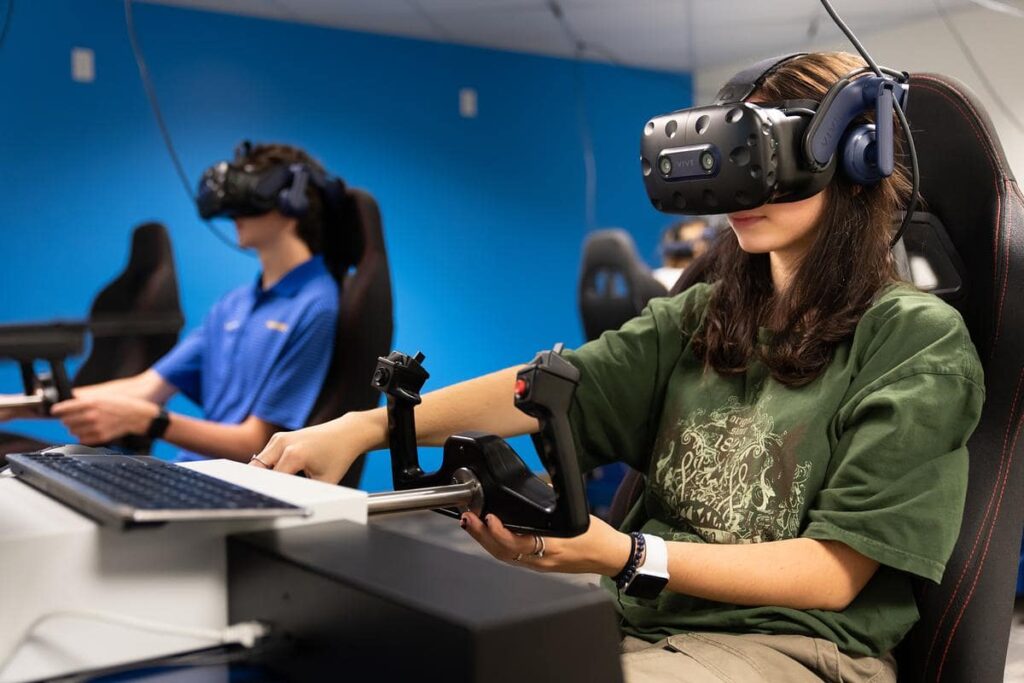
6. Construction:

VR training is being used in the construction industry to provide immersive and interactive training to workers. For example, VR can be used to simulate different construction sites and environments, allowing workers to practice different tasks and procedures. VR training can also be used to teach workers about safety procedures and protocols.

1. Process visualization:
VR is being used to visualize and interact with complex construction processes, such as building and site plans. For example, employees can use VR to walk through and experience a construction project, allowing them to better understand and troubleshoot issues. VR training can also be used to teach employees about different cultures and environments they may encounter while working on construction projects.
2. Leadership and management training:
VR is being used to provide training to leaders and managers in the construction industry. For example, VR can be used to simulate different leadership scenarios, such as leading a team or making strategic decisions under pressure. VR training can also be used to teach leaders and managers about different cultures and environments they may encounter while leading teams.
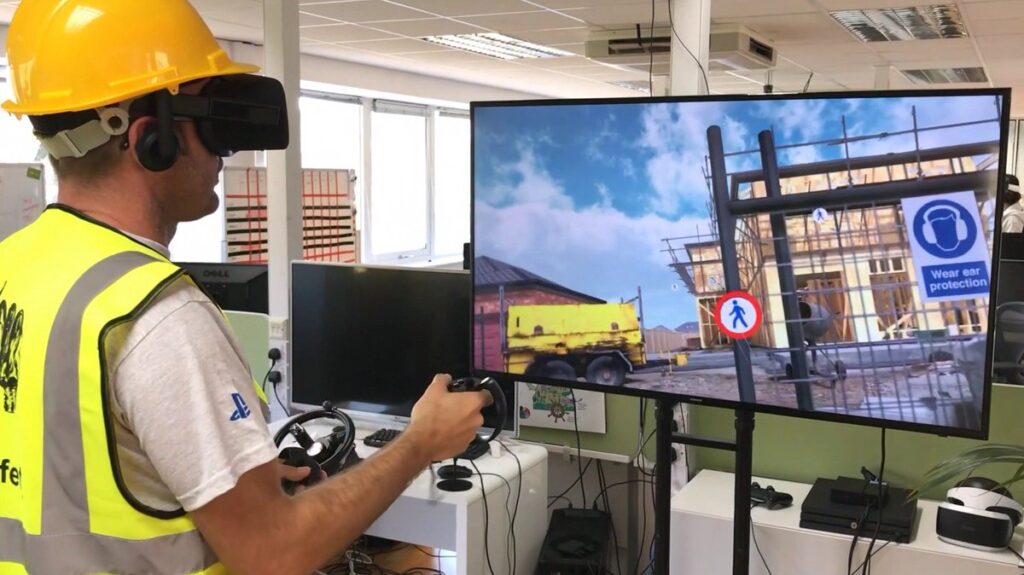
7. Education

VR training is being used in education to provide immersive and interactive learning experiences to students. For example, students can use VR to visit historical sites, learn about scientific concepts, or experience different cultures and environments. VR training can also be used to simulate real-world scenarios, such as surgeries or aircraft pilots, to provide hands-on training experiences.

1. Hands-on learning:
VR is being used to provide immersive and interactive learning experiences to students. For example, students can use VR to visit historical sites, learn about scientific concepts, or experience different cultures and environments. VR training can also be used to simulate real-world scenarios, such as surgeries or aircraft pilots, to provide hands-on training experiences.
2. Distance learning:
VR is being used to provide remote learning experiences to students. For example, students can use VR to attend virtual classes or participate in group discussions, allowing them to learn from anywhere. VR training can also be used to provide remote hands-on learning experiences, such as virtual lab simulations.
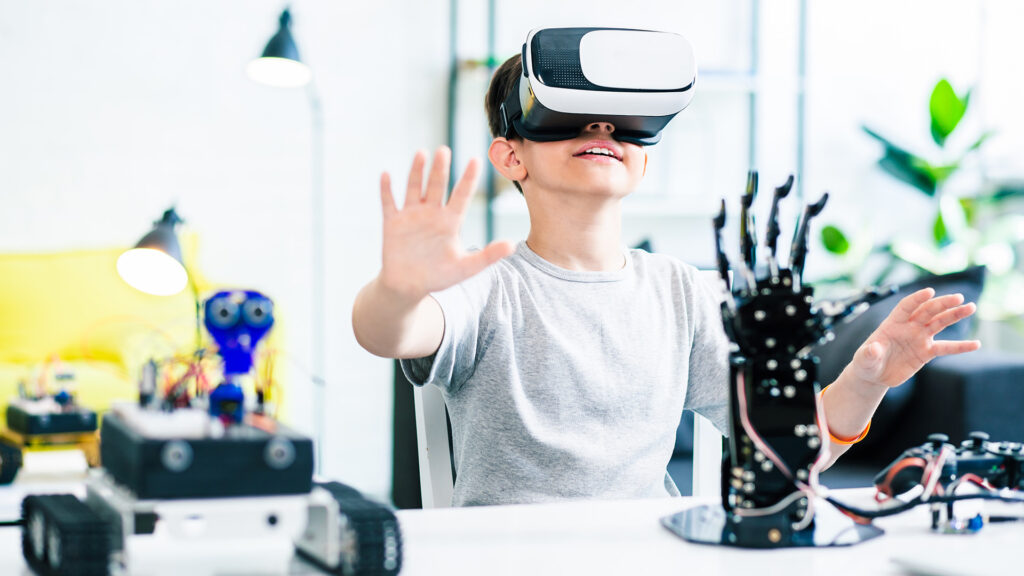
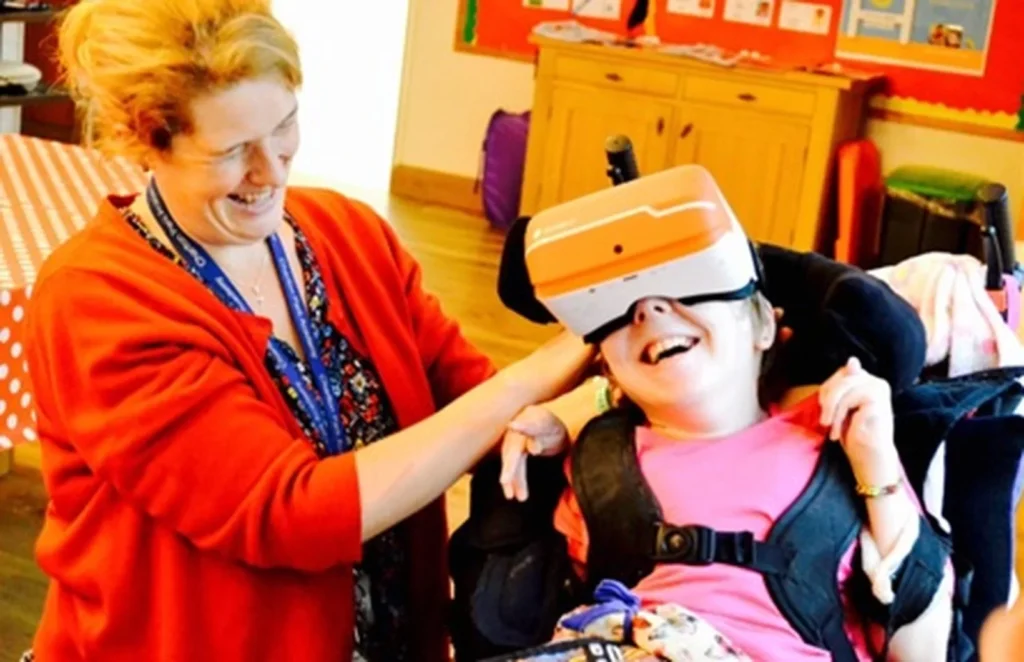
3. Special education:
VR is being used to provide customized learning experiences to students with special needs. For example, VR can be used to provide visual or auditory learning aids, or to accommodate students with physical disabilities. VR training can also be used to provide immersive and interactive learning experiences to students with special needs.
4. Professional development:
VR is being used to provide professional development and training to teachers and educators. For example, teachers can use VR to learn about new teaching methods, or to experience different cultures and environments. VR training can also be used to provide hands-on learning experiences to teachers and educators.

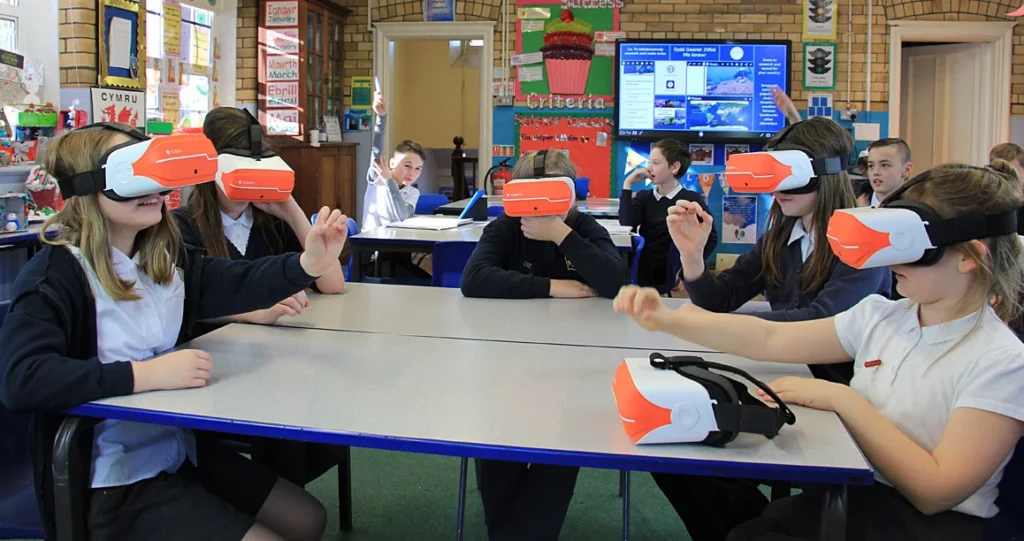
5. Student engagement:
VR is being used to engage and motivate students in their learning. For example, VR can be used to create interactive and immersive learning experiences that capture students’ attention and keep them engaged. VR training can also be used to provide personalized learning experiences that are tailored to students’ interests and learning styles.
These are just a few examples of how VR training is being used today. As the technology continues to advance, it is likely that VR will be used in an even wider range of applications and industries to provide immersive and interactive training experiences.
